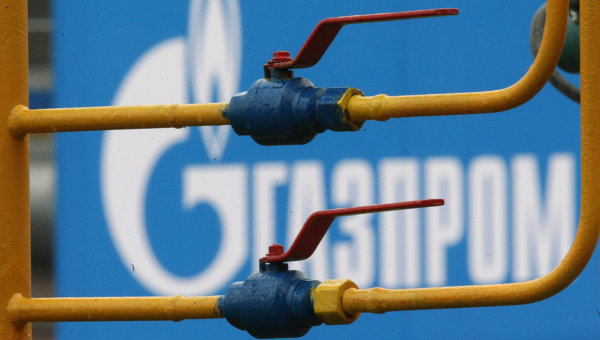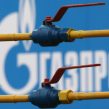
Putin Persists With LNG-Zing the South Stream Project
Publication: Eurasia Daily Monitor Volume: 8 Issue: 57
By:

On March 21, at his Novo Ogaryovo residence, Russian Prime Minister Vladimir Putin witnessed the signing of a memorandum of understanding (MOU) to negotiate German Wintershall’s accession to Gazprom’s South Stream project. Wintershall, a gas producer and trader, is the fully owned gas subsidiary of German BASF, the world’s largest petrochemical concern.
BASF/Wintershall is also one of Gazprom’s partners in the Nord Stream pipeline project on the Baltic seabed, in the Achimovskoye and Yuzhno Russkoye gas field developments in Siberia, and in joint marketing of gas with Gazprom in several EU countries, including Germany. In that country, Wintershall has helped pioneer the Gazprom-favored practice of asset-swapping, opening direct access for the Russian monopoly to German end-consumers.
Gazprom CEO, Aleksei Miller, and BASF board chairman, Juergen Hambrecht, signed the MOU whereby Wintershall may acquire a 15 percent stake in South Stream’s pipeline section on the seabed of the Black Sea, subject to negotiations. Putin took the liberty of purporting to quote German Chancellor Angela Merkel as “welcoming” this deal personally. Russian Deputy Prime Minister, Igor Sechin, expects Wintershall to pay approximately $2 billion for this 15 percent stake. Gazprom retains its existing 50 percent stake intact (Gazprom press release, Interfax, March 21).
In parallel, Electricite de France (EdF) has been negotiating on the basis of separate MOUs to acquire a 10 percent stake in South Stream’s seabed section. Gazprom had founded South Stream in 2007 as a 50 percent-50 percent venture with Italian ENI. Any accessions to the offshore project by other parties correspondingly reduce ENI’s share, while Gazprom’s remains intact.
Gazprom and ENI expect German and French interests to lobby in the EU on behalf of this project. The goal is to stop the EU Commission from enforcing EU law regarding Gazprom-controlled pipelines on EU territory (Euractiv, March 21, 22).
Wintershall and EdF had been discussing their possible accession to South Stream’s seabed pipeline project since 2009. On March 16, however, Putin (along with Sechin and Energy Minister Sergei Shmatko) announced a stunning transformation of this project, switching from natural gas and pipeline transportation to liquefied gas (LNG) and tanker transportation, and implicitly downscaling the gas volume to be offered (EDM, March 4, 18). With that announcement, Moscow for the first time identified a future source of gas for this Black Sea project. It named the Tambey field on western Siberia’s Yamal Peninsula, which is earmarked for development by Russian Novatek with French Total, specifically for export as LNG. That MOU was signed on March 2 at Novo Ogaryovo in Putin’s presence (EDM, March 4) –a ceremony mirrored on March 21 by Wintershall’s MOU about joining the South Stream pipeline.
Thus, Putin has presided over the signing of two mutually incompatible agreements with European partners in quick succession. Putin held court over each set of partners at Novo Ogaryovo for the signing. The March 17 announcement switching from natural gas to LNG could only embarrass South Stream’s West-European managers (EDM, February 17), who were advertising the pipeline project in the United States at that moment. And it could only unsettle French Total, suddenly faced with Putin’s idea of liquefying Yamal gas 4,000 kilometers away on the Black Sea coast.
Visiting Slovenia (en route to Serbia) on March 22, Putin outlined three possible versions for implementing South Stream or a successor project in the Black Sea (Interfax, STA, March 22, 23):
1. Laying the South Stream pipeline as initially envisaged on the seabed of the Black Sea from Russia to Bulgaria, crossing Turkey’s exclusive economic zone (EEZ). Toward that end, Moscow would present necessary documentation to Ankara in the coming months. Putin did not mention, much less explain, the failure to provide such documentation since 2009 as promised (by himself in August that year) to Ankara. The documentation issue almost certainly covers up some other considerations (prohibitive costs due to the Turkish EEZ’s greater length and depth, compared to Ukraine’s, which Moscow wants however to bypass).
2. Building an LNG plant for Yamal gas on Russia’s Black Sea coast and shipping the product to, “let’s say,” Bulgaria, for re-gasification there and onward transportation through overland pipelines. Those would be jointly owned and operated by Gazprom with each participant country. This is fully in line with the March 16 announcement about LNG-zing South Stream, adding however the ambiguity regarding Bulgaria. The ambiguity is calculated to tempt neighboring Romania into entering this game. According to Putin and Shmatko accompanying him, Russia is asking the European Commission to exempt Gazprom-owned pipelines on EU territory from the EU’s energy market legislation.
3. Liquefying Yamal gas near the Yamal production site and shipping the LNG by tankers to “one of the countries in Southern Europe,” again according to Putin. The re-gasified product would then be transported by overland pipelines to South Stream participant countries. Apparently, Moscow expects countries to remain committed to the South Stream project in order to qualify for gas deliveries by one of the routes proposed. However, field development and LNG production on Yamal are, at best, distant prospects; and the proposed solution’s costs would be unfathomable (Interfax, March 23).
Even Gazprom finds it difficult to fall into line with Putin’s ideas on transforming the South Stream project. Gazprom’s CEO, Miller, “hope[s] that the project would be implemented in its initial form” (Interfax. March 22).
Never to be taken at face value in its original form since 2009, the South Stream project is acquiring farcical aspects in its LNG-ized version.




